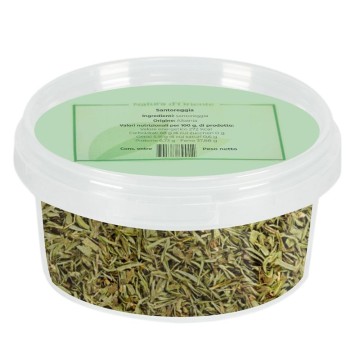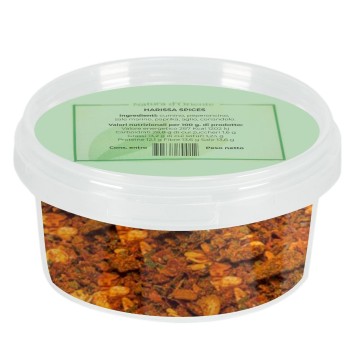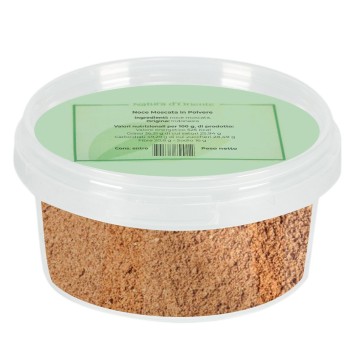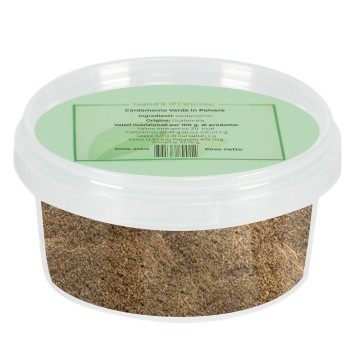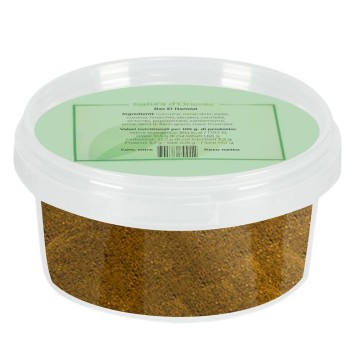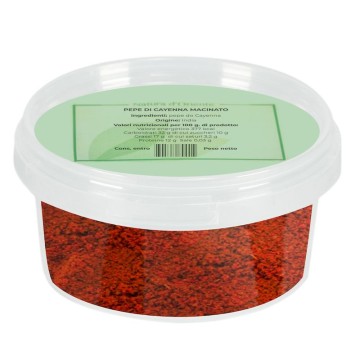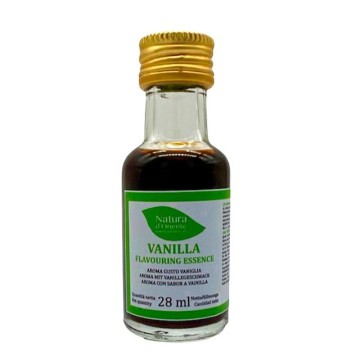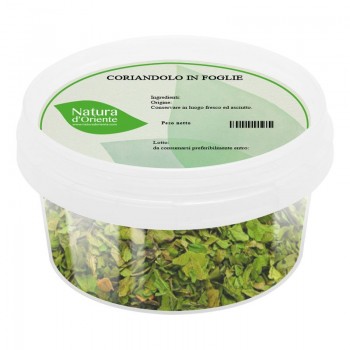It is a precious spice, known in various cuisines around the world for adding its aromatic profile to many dishes, particularly in desserts and baked goods. This version of Whole Ceylon Cinnamon comes from its historical territory, former Ceylon and today Sri Lanka, and is considered the most common in cooking. Whole cinnamon sticks help to enhance the intense and sweet aroma, warm in both smell and taste. This cinnamon is an excellent ingredient for creating aromatic and sweet creams, puddings, crepes and pancakes. Excellent in traditional Christmas desserts, it flavors hot drinks, sometimes in mixtures of other spices and fruits.
Ceylon cinnamon: properties and benefits
In addition to its particular aroma, cinnamon is traditionally used for its beneficial qualities on our body. It is considered a spice with digestive power and promotes both the regularity of intestinal transit and the elimination of excess gas. Some of the elements in Ceylon cinnamon facilitate the assimilation of food during the digestive process, avoiding abdominal bloating. It shows natural purifying and astringent qualities that promote the well-being of the stomach and intestines, thanks to the substance of cinnamaldehyde; for this reason it has historically been used as a detoxifying spice. Cinnamon represents a source of antioxidants, given that it has a high concentration of polyphenols. These compounds counteract the oxidative stress of cells, and help counteract cellular damage.
Within a diet, it can be useful to include cinnamon for its action on carbohydrate metabolism. It is the subject of various studies for the possibility of influencing the better management of blood sugars; given that it contains an antioxidant compound, which acts on the absorption of glucose after meals.
Moreover, it gives a sense of satiety with its intense flavor and aroma. These virtues make Ceylon cinnamon an ally for slimming diets, if used as part of a correct and balanced diet.
Always by virtue of its purifying properties, cinnamon counteracts irritation of the oral cavity and gums. In fact, it was also known in popular culture to soothe sore throats and colds. Furthermore, historically whole Ceylon cinnamon sticks have been used to perfume rooms.
How to use whole cinnamon in cooking
The quality of Ceylon variety cinnamon is superior to others, unique in quality, colour, flavor and aroma.
Whole Ceylon cinnamon sticks are aromatic but delicate in taste, and can be successfully added to infusions and creams. The whole version guarantees a persistent aroma and for this reason it is much appreciated in dishes or drinks that release the scent of cinnamon in a strong way. In any case, the whole cinnamon must be dosed carefully, to prevent the flavor and aroma from overpowering the other ingredients.
Drinks: Its consistency combines well with liquids, in which it must be left to infuse for a set time, or it must be added before they reach the boil. Excellent for flavoring milk, tea, punch, infusions; perfect in hot chocolate, and as an addition to mulled wine and a cup of coffee. You can use cinnamon sticks for liquor, honey, syrup or even to flavor water. Dried cinnamon bark can be used for infusions by leaving ½ stick to infuse in hot water (about 100°C) for about 5 minutes.
Savory recipes: whole cinnamon can also be used in broths, stews and soups, inspired by oriental tradition.
A stick of Ceylon cinnamon can flavor second courses such as meat stew and enter as a marinade ingredient together with other spices and aromatic herbs. It is also used in oriental recipes with fish dishes, curries and in sauces for rice. In several cream or filling recipes, the cinnamon stick is left whole during cooking. The same method is used for basmati rice, to which a cinnamon stick is added to the pan during cooking - it will release the oil into the rice.</ p>
Sweets: Cinnamon sticks can make a classic apple pie or other dessert tangy and aromatic, ground and mixed with other ingredients. For breakfast it can be used in smoothies or yoghurts by crumbling it in the blender.
It is possible to start from stcinnamon flakes to pulverize or grind them, giving the desired size using a grater or grinder - remembering that once pulverized it does not retain the aroma for long so it should be used immediately.
Origins and history of cultivation
Ceylon cinnamon is a spice used since ancient times and comes from the Indian subcontinent. Precisely from the island of Ceylon (Sri Lanka), where it was used for centuries and then also discovered by Westerners.
Also known as true cinnamon, today this variety grows in many regions of southern Asia, also covering the territories from Madagascar and the Seychelles islands.
The spice is obtained from the internal part of the bark of the cinnamon tree (Cinnamomum zeylanicum), which was dried. During the drying process, the bark curls, creating the familiar cinnamon stick structure. The whole Ceylon cinnamon in this version, therefore, comes directly from the plant and is not ground.
Historically, the spice is an important part of the Ayurvedic tradition, used for thousands of years. Used on food, in India this spice is also famous in Ayurvedic medicine for treating indigestion and gastrointestinal disorders, as well as respiratory tract disorders.
Already in 3000 BC. it was known to the Egyptians, used as a perfume for embalming, then widespread as a prized spice in the Middle East. It is also mentioned in the Bible among the aromas used by Moses to consecrate the temple. Known in cooking throughout the East and then in the West as a preservative, it was brought to Europe by Arab traders. It became popular with the Greeks and Romans for its ability to preserve meat during the winter, and provide a covering flavor to natural deterioration. It was considered a precious and expensive commodity, used in royal and noble kitchens, often combined with pepper to flavor game and some desserts.
The Arabs kept the origin of cinnamon hidden, transported overland via caravans, until geographical discoveries led to the identification of the Indian islands from which it came. Portuguese explorers were looking for the spice, and found it in Ceylon (Sri Lanka), starting to spread it. Together with other explorers (Dutch, English and French), it was introduced into Europe at lower prices and at the end of the eighteenth century it reached the Seychelles and Madagascar, where it was cultivated. Over time, the Ceylon cinnamon variety was cultivated in Brazil, in the Caribbean in Jamaica, in Fiji and French Polynesia, in Indonesia, Java, Malaysia and Sumatra. Cinnamon later became a usual ingredient in gastronomy, and in the nineteenth century it was included in the 4 main spices of the most common recipes, together with pepper, nutmeg and cloves.
Plant characteristics
The Ceylon cinnamon tree is Cinnamomum zeylanicum. It is an evergreen bushy plant of the Lauraceae family, equipped with the famous bark with aromatic qualities. The cracked bark has a light brown color, which we also find in whole cinnamon sticks.
The cinnamon tree grows in moist, well-drained soil, and can reach about 15 meters in height. The oval leaves with margins are red when young and when they mature they turn towards intense green. The small flowers are greenish to yellow, while the fruit is a dark drupe. There are other species related to Ceylon cinnamon grown as a source of the spice, including Chinese cassia (Cinnamomum cassia), Vietnamese cinnamon (C. loureiroi), Indonesian cinnamon (C. burmannii with a stronger odor) and Ceylon cinnamon Malabar (C. citriodorum).
Nutritional values of cinnamon powder
The main compound in Ceylon cinnamon is cinnamaldehyde (makes up 60-80% of the volatile oils), which gives cinnamon its sweet, spicy scent. Ceylon cinnamon is also rich in polyphenols and tannins, minerals such as manganese and iron, vitamins A, C, K and group B vitamins.
Cinnamon: side effects and contraindications
Ceylon cinnamon does not have the potential side effects associated with cassia cinnamon. Ceylon cinnamon, however, also contains cinnamaldehyde, a compound that can trigger an allergic reaction if taken in large quantities. Some people may experience burning or itching sensations, sores in the mouth, swelling of the tongue or gums. Furthermore, when doses are excessive, cinnamon can be irritating to the throat and oral cavity. Caution is advisable to be assessed for any allergies d






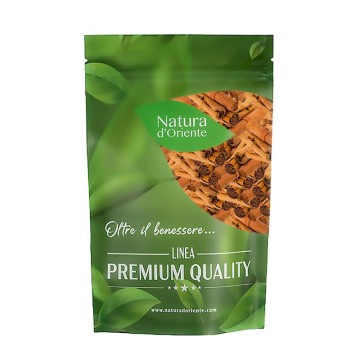




 No reward points for this product.
No reward points for this product.



